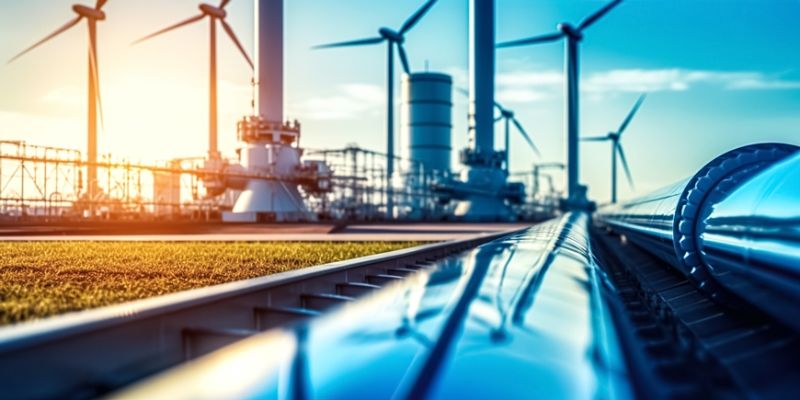How can we save energy for later?
How do you bring surplus energy from summer into winter? This is one of the central questions with regard to how we will ensure our energy supply in the future in a sustainable and at the same time secure way – especially since we want to avoid fossil fuels. This topic is also of interest to master's student Josien de Koning: "The Swiss power grid currently has excess production in the summer, while we are dependent on imports in the winter. This imbalance will be further increased by electrification and the replacement of nuclear power plants with renewable energy sources such as solar energy. It's important to find solutions to counter this." In her master's program in "Integrated Building Systems" at ETH Zurich, she therefore wanted to take a closer look at one of the possible solutions in a semester thesis. Experts from Empa's Urban Energy Systems lab supported her in this project, which she did at the beginning of 2022.
Storing energy for months
De Koning focused on the integration of a so-called power-to-hydrogen-to-power (P2H2P) system. This is used to convert – ideally surplus – electricity into hydrogen, store it and generate electricity from it again when required. The system includes various components, such as PV systems, an electrolyzer, hydrogen tanks and fuel cells. The big advantage is that, unlike other storage methods such as batteries, the energy can be stored for months without any losses. "In my thesis, I wanted to find out whether it makes sense to integrate such a solution into an energy system. I chose an apartment building in Obersiggenthal as research object," explains de Koning.
The first step was to model the system using a special software. For this, the master's student used the so-called ehub tool, which Empa researchers had developed in recent years and from which the spin-off Sympheny ultimately emerged. The tool models energy systems and performs calculations on them. First, de Koning defined in the software which components should be installed, which energy sources are available and what the building's energy requirements are. After this, the system needed to be further optimized. For this purpose, the student entered data from various databases into the software. These included, for example, solar radiation, CO2 emissions and electricity prices from the Swiss power grid, as well as various technical data of the individual components.
The optimal solution
The software then used the input data to calculate the costs and emissions of a P2H2P system and a conventional system without the hydrogen components – for now and for the year 2040. The aim was to identify whether the solution, if not today, had any potential in the future.
On one hand, the results showed that the P2H2P system was able to level out the energy imbalance as desired. Batteries and thermal storage were able to handle daily fluctuations, the hydrogen system covered seasonal differences. On the other hand, however, the P2H2P system was not found to be the optimal solution in any of the scenarios. Its integration was more expensive and had higher emissions than the conventional system in both 2020 and 2040. The main problem was the storage tank for hydrogen, the size of which had a strong impact on both costs and emissions.
Nevertheless, Josien de Koning is convinced that the system could have potential in the future: "It is possible that the P2H2P system in 2040 could be acceptable in terms of price and CO2 emissions. To achieve this, however, we must succeed in significantly reducing the size of the hydrogen tank." The key factors for that are technological improvements and price reductions in the system itself, as well as reducing energy consumption in general.
One important point: De Koning did the analysis in the context of the Swiss power grid, which is already very clean. She assumes that in other European power grids, which have higher CO2 emissions, the P2H2P system would perform better. Coupling it with industries that could use hydrogen in the future – for example, as a substitute for natural gas in high-temperature applications – could also make the technology more lucrative.
Therefore, if certain conditions change in future, power-to-hydrogen-to-power systems could help to transfer surplus energy from summer to winter. In any case, it is clear that the topic will continue to accompany Josien de Koning in her future studies: "From my project at Empa, I'm taking away a lot of valuable insights and follow-up questions for my further academic path."
Support for students
At Empa, around 100 bachelor's and master's students from a wide range of disciplines are supported each year with their semester and final theses. The knowledge and tools of the different labs are available to them. In the field of energy, in addition to the ehub tool, students also have the opportunity to use the ehub platform to address their energy questions. On this platform, thousands of historical and live data from Empa's buildings are collected and made available.
